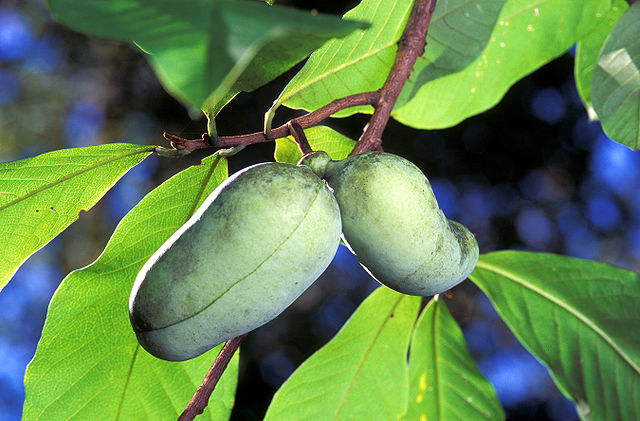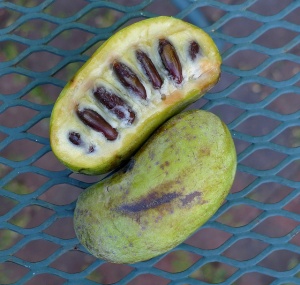Paw paw
Paw Paw
Asimina Triloba
Background
A relatively unknown fruit commercially, this is likely the largest fruit native to North America. Endemic to the eastern United States and a small part of Canada, it is a small woody tree that grows best in partial shade as an understory plant. The flowers, which blossom in May, tend to have a slightly disagreeable odor and attract flies, beetles and other insects. Genetically, it is in the Annonaceae Family, in which almost all of the other species are native to sub-tropical or tropical climates. The paw-paw is therefore a temperate variant of what would otherwise be a tropical fruit.
Growth and Reproduction
Like most other plants, Paw-paws can have cuttings and grafts taken. Paw Paws are a patch-forming plant, tending to give rise to small clonal colonies by means of adventitious shoots that grow outwards from the main root system. At least 2 separate plants are required for fruiting.
Fruit
The characteristic fruit of the paw-paw contains large, dark brown seeds, usually several per fruit. The fruit is described as having a unique taste, somewhat like a banana with a custard-like, or melon flavor. Most people find the taste very agreeable and delicious. The fruit ripen like tomatoes in the sense that they have ethylene-mediated ripening. They should be eaten fresh but can be stored in a plastic bag and refrigerated to keep their freshness for a period of time.
Biologically active compounds
Eating paw-paw seeds as well as unripe paw-paws should be avoided, because of its known emetic properties. However, the plant contains other compounds that form its own unique class of chemicals known as 'annonaceous acetogenins'. The insecticidal properties of the plant are known, revealing a possibility for its use as an organic pesticide. As well, there has been substantial research into the very real possibility of a. triloba extract to be used as an anti-cancer drug 1 2 Acetogenins and other compounds for use as pesticide are concentrated in the twigs and small branches, avoid using the leaves as they contain much less active material. It should be noted that there is high variation between plant to plant and one tree may not have the same effectiveness as another.
Paw-paws at Factor E Farm
Recommendation
FeF Agriculture director should try to acquire more varieties to capitalize on the genetic resources of this unique, useful and tasty plant.

